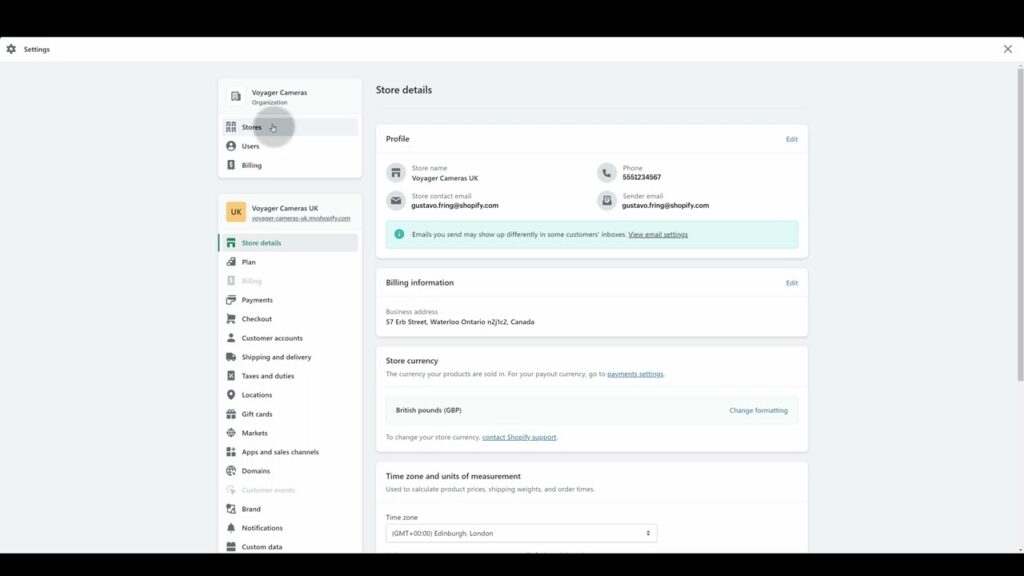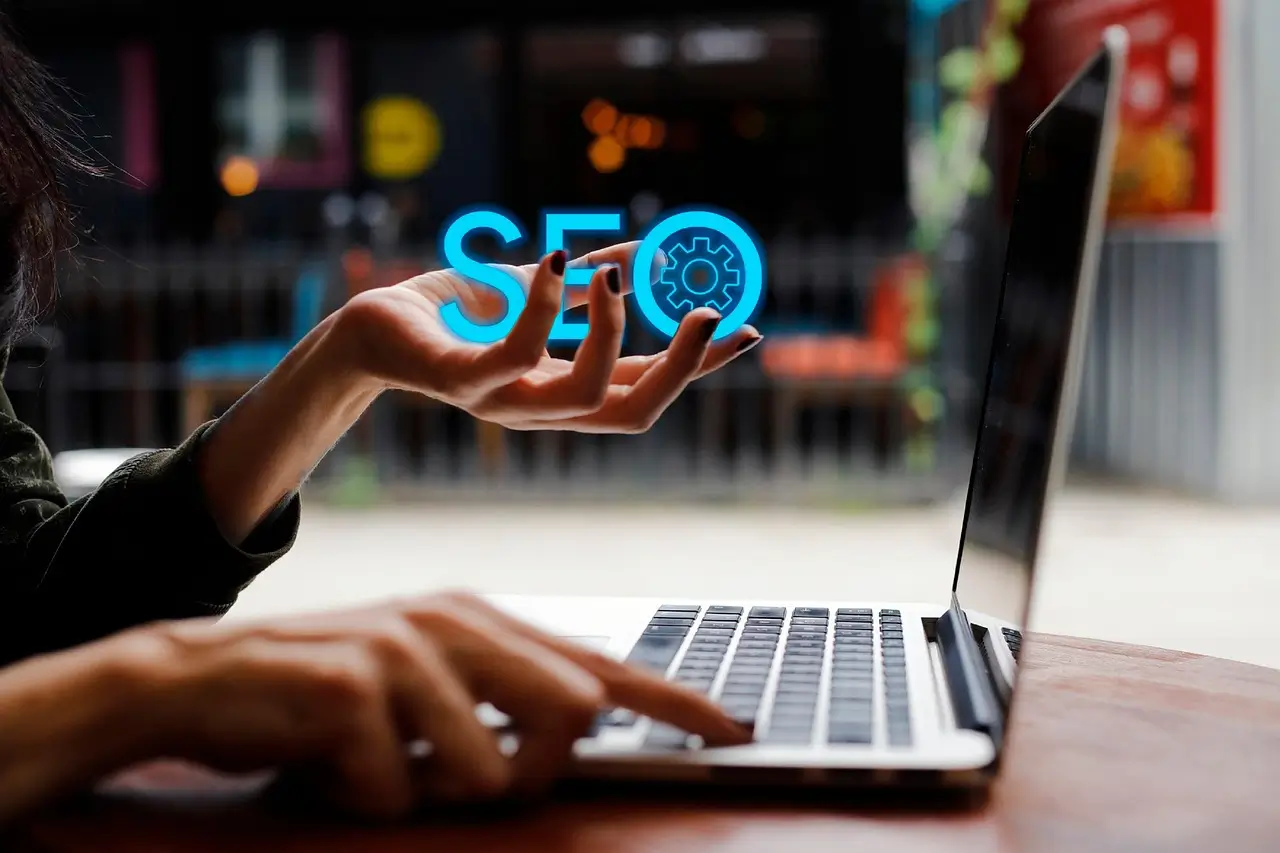Table of Content
Table of Contents
Introduction: Why Shopify SEO is Crucial for E-commerce Success
Did you know that 93% of online experiences begin with a search engine, yet only 0.78% of Google searchers click on results from the second page? For Shopify store owners, these statistics highlight an undeniable truth: without effective SEO, your beautiful products might as well be invisible.
In today’s fiercely competitive e-commerce landscape, simply having a Shopify store isn’t enough. With over 1.75 million merchants using Shopify worldwide, standing out requires more than just a great product lineup and attractive design. You need visibility where your customers are already looking—on search engines.
This comprehensive guide will walk you through everything you need to know about Shopify SEO, from foundational concepts to advanced strategies that can transform your store’s organic search performance. Whether you’re just launching your first store or looking to optimize an established e-commerce business, this resource will equip you with actionable insights to improve your rankings, drive qualified traffic, and increase sales.
Shopify SEO Fundamentals: Getting the Basics Right
Before diving into advanced tactics, it’s essential to understand how Shopify’s architecture interacts with search engines and how to leverage its built-in capabilities.
Understanding Shopify’s SEO Strengths and Limitations
Shopify offers several SEO advantages right out of the box:
- Automatic sitemap generation: Shopify automatically creates and updates your XML sitemap
- Mobile-friendly themes: All official themes are responsive by default
- SSL certificate inclusion: Every store gets HTTPS security
- Reasonable site speed: Most themes are designed with performance in mind
However, the platform also presents unique challenges:
- Rigid URL structure: Limited control over URL formats
- Duplicate content risks: Collection pages can create duplication issues
- Theme-dependent performance: Some themes introduce bloat that slows your site
- App-related limitations: Excessive apps can degrade performance
Understanding these characteristics helps you work with—rather than against—Shopify’s inherent structure.
Essential Shopify Settings for SEO
The foundation of Shopify SEO for beginners starts with configuring these basic settings:
1. Title and Meta Descriptions
Navigate to Online Store → Preferences in your Shopify admin and set your:
- Home page title (include your primary keyword)
- Home page meta description (compelling 150-160 character summary with keyword)

2. Store Navigation Structure
Under Online Store → Navigation, structure your menus logically. This not only improves user experience but creates a sensible site hierarchy for search engines.
3. Google Search Console and Analytics Integration
Connect your store with:
- Google Search Console: For monitoring search performance and addressing technical issues
- Google Analytics 4: For tracking user behavior and conversion data
To connect these tools, go to Online Store → Preferences and add your Google Analytics tracking ID and verify your site with Search Console.
Read: Start Your Shopify Store 2025: The Complete Step-by-Step Guide
Choosing an SEO-Friendly Shopify Theme
Your theme choice significantly impacts your SEO potential. When evaluating themes, look for:
- Clean, efficient code: Fewer HTTP requests and minimal JavaScript
- Mobile optimization: Responsive design with good Core Web Vitals scores
- Schema markup support: Built-in structured data implementation
- Customization options: Ability to edit title tags, meta descriptions, and alt text
- Loading speed: Faster themes typically rank better
Popular SEO-friendly themes include Debut, Brooklyn, and Turbo, but always test a theme’s performance using tools like Google PageSpeed Insights before making a final decision.
Deep Dive: Technical SEO for Shopify Stores
Technical SEO forms the foundation upon which all other optimization efforts rest. For Shopify stores, mastering these technical elements can provide a significant competitive advantage.
Site Speed Optimization
According to Google, 53% of mobile visitors abandon sites that take longer than three seconds to load. Here’s how to ensure your Shopify store doesn’t fall victim to abandonment:
Image Optimization
- Format selection: Use WebP or JPEG for photos, PNG for graphics with transparency, and SVG for icons
- Compression: Tools like TinyPNG or Shopify’s built-in image optimizer
- Dimensions: Resize images to their display size rather than using CSS scaling
- Lazy loading: Enable this to defer off-screen images until needed
Code Optimization
- Minimize apps: Each app adds code that can slow your site
- Clean theme code: Remove unused features and minimize custom JavaScript
- Leverage Shopify’s CDN: Content Delivery Network is included but needs proper configuration
Performance Testing Tools
| Tool | Best For | Key Metrics |
|---|---|---|
| PageSpeed Insights | Overall performance score | LCP, FID, CLS |
| GTmetrix | Detailed waterfall analysis | TTFB, Page load time |
| WebPageTest | Mobile simulation | Visual loading sequence |
A 100-millisecond delay in load time can reduce conversion rates by 7%, making speed optimization a direct revenue factor.
Mobile-Friendliness Beyond Responsiveness
While Shopify themes are responsive by default, true mobile optimization requires more attention:
- Touch-friendly navigation: Ensure clickable elements are at least 44×44 pixels
- Font readability: Minimum 16px for body text
- Simplified mobile checkout: Remove unnecessary fields
- Accelerated Mobile Pages (AMP): Consider AMP for blog content
Test your mobile experience using Google’s Mobile-Friendly Test and address any issues it identifies.
Shopify URL Structure and Canonicalization
Shopify creates URLs based on predefined patterns, which can sometimes create SEO challenges:
Default URL Structures
- Products:
/products/product-name - Collections:
/collections/collection-name - Pages:
/pages/page-name - Blog posts:
/blogs/blog-name/post-name
Handling Duplicate Content
Products appearing in multiple collections can create duplicate content issues. Ensure proper canonicalization by:
- Using the Shopify canonical tag feature (enabled by default)
- Implementing consistent internal linking practices
- Being strategic with collection filtering
Structured Data Implementation
Structured data helps search engines understand your content and can enable rich results. For Shopify stores, implement these schema types:
- Product schema: Price, availability, reviews
- Organization schema: Brand information, logo
- BreadcrumbList schema: Navigation path
- FAQPage schema: For FAQ sections
- Article schema: For blog content
Most modern Shopify themes include basic schema markup, but you may need custom code or apps for comprehensive implementation.
{
"@context": "https://schema.org/",
"@type": "Product",
"name": "Product Name",
"image": "https://yourstore.com/image.jpg",
"description": "Product description",
"brand": {
"@type": "Brand",
"name": "Your Brand"
},
"offers": {
"@type": "Offer",
"url": "https://yourstore.com/products/product-name",
"priceCurrency": "USD",
"price": "49.99",
"availability": "https://schema.org/InStock"
}
}
Crawlability and Indexability
Ensure search engines can efficiently crawl and index your store:
- robots.txt configuration: Shopify automatically generates this file, but verify it’s not blocking important content
- Strategic noindex tags: Apply to utility pages like account pages and filtered collection views
- XML sitemap optimization: Ensure all important pages are included and update frequency is appropriate
- Internal linking structure: Create a logical hierarchy with descriptive anchor text
Mastering On-Page SEO for Shopify
On-page SEO refers to optimizing individual pages on your Shopify store to rank higher and earn more relevant traffic. This is where your keyword strategy comes to life.
Keyword Research for E-commerce
Effective Shopify SEO begins with understanding what your potential customers are searching for.
Keyword Types for Shopify Stores
| Keyword Type | Example | Best Used For |
|---|---|---|
| Product Keywords | “blue cotton t-shirt” | Product pages |
| Category Keywords | “women’s summer dresses” | Collection pages |
| Problem-Solution | “how to remove coffee stains” | Blog content |
| Comparison | “Nike vs Adidas running shoes” | Comparison pages/blog |
| Local Keywords | “jewelry store near me” | Local landing pages |
Recommended Keyword Research Tools
- SEMrush: Best for competitive analysis
- Ahrefs: Excellent for finding keyword gaps
- Ubersuggest: Good free option for beginners
- Google Keyword Planner: Great for ad-related research
- AnswerThePublic: Perfect for question-based keywords
When conducting keyword research, focus on:
- Search volume: How many people search for this term monthly
- Competition level: How difficult it will be to rank
- Commercial intent: How likely searches will convert
- Relevance: How closely it matches your products
Product Page SEO
Product pages are the most valuable real estate on your Shopify store. Optimize them with these elements:
Title Tags
- Include primary keyword near the beginning
- Add your brand name
- Keep under 60 characters
- Format: Primary Keyword – Product Description | Brand Name
Example: “Organic Cotton T-Shirt – Men’s Sustainable Fashion | EcoWear”
Meta Descriptions
- Include primary and secondary keywords naturally
- Add a clear call-to-action
- Keep between 150-160 characters
- Highlight unique selling points
Product Descriptions
- Write unique, detailed descriptions (300+ words)
- Front-load with important keywords
- Describe features AND benefits
- Use bullet points for scanability
- Answer common customer questions
Image Optimization
- Use descriptive file names (blue-cotton-tshirt.jpg vs IMG10234.jpg)
- Add keyword-rich alt text
- Compress images without quality loss
- Implement lazy loading
User-Generated Content
- Enable and highlight customer reviews
- Respond to questions (creates fresh content)
- Display user-generated photos
Internal Linking
- Link to related products
- Link to relevant collection pages
- Use descriptive anchor text
Collection Page SEO
Collection pages help organize your products and are powerful SEO assets when properly optimized:
- Unique content: Add 200-300 words of original description
- Subcategory linking: Create a logical hierarchy
- Filter optimization: Use AJAX filtering to prevent crawling of filtered URLs
- Pagination: Implement rel=”next” and rel=”prev” tags
Read: Start Your Shopify Store 2025: The Complete Step-by-Step Guide
Blog Content Strategy for SEO
A Shopify blog is one of the most underutilized SEO tools. Use it to:
- Target informational keywords related to your products
- Create buying guides that naturally link to products
- Answer customer questions comprehensively
- Build authority in your niche
For optimal blog SEO:
- Create a content calendar based on keyword research
- Maintain consistent publishing schedule
- Aim for comprehensive coverage (1500+ words for pillar content)
- Use proper heading structure (H1, H2, H3)
- Include internal links to relevant products and collections
Content Marketing & Link Building for Shopify Stores
Creating great content and earning quality backlinks remain among the most powerful Shopify SEO strategies available.
Developing a Content Strategy
An effective content strategy for Shopify stores follows this framework:
- Awareness content: Educational blog posts, guides, and resources
- Consideration content: Buying guides, comparison articles, reviews
- Decision content: Product descriptions, FAQs, testimonials
Each content type should target keywords appropriate to its stage in the buyer’s journey.
Content Types That Drive Traffic and Sales
| Content Type | SEO Benefit | Conversion Benefit |
|---|---|---|
| Ultimate Guides | Targets high-volume keywords | Establishes expertise |
| Product Comparisons | Captures research-phase traffic | Addresses objections |
| How-To Tutorials | Ranks for long-tail keywords | Shows product value |
| Customer Success Stories | Builds brand keywords | Provides social proof |
| Gift Guides | Seasonal traffic opportunity | Direct product promotion |
Internal Linking Strategy
Strategic internal linking distributes page authority and guides users through your site:
- Link from high-authority pages to important product pages
- Use descriptive anchor text containing target keywords
- Create content hubs around main categories
- Implement breadcrumb navigation
Shopify-Specific Link Building Tactics
Building quality backlinks to your Shopify store requires creativity and persistence:
Supplier Relationships
- Request inclusion in “Where to Buy” listings
- Collaborate on co-branded content
Resource Link Building
- Create genuinely useful tools or resources
- Develop industry statistics or original research
- Design shareable infographics
Public Relations
- Share newsworthy store innovations
- Contribute expert commentary on industry trends
- Create data-driven press releases
Broken Link Building
- Find broken links on relevant industry sites
- Create similar but improved content
- Suggest your content as a replacement
Remember that quality always trumps quantity with backlinks. One link from an authoritative industry site outweighs dozens from low-quality directories.
The Best Shopify SEO Apps & Tools (Updated for 2025)
With the right tools, improving your Shopify SEO becomes significantly more manageable. Here’s a critical evaluation of the most effective solutions available in 2025 for your Shopify store:
All-in-One SEO Apps
SEO Booster (Premium)
Pros:
- Comprehensive site audit capabilities
- Automated meta tag optimization
- Advanced schema markup implementation
- Regular feature updates
Cons:
- Higher price point ($29-$79/month)
- Can slow site if all features are enabled
- Steep learning curve for beginners
Best for: Medium to large stores with dedicated marketing staff
Smart SEO (Value Option)
Pros:
- Affordable ($9.99/month)
- User-friendly interface
- Good meta tag management
- Basic JSON-LD schema implementation
Cons:
- Limited technical optimization features
- No content suggestions
- Basic reporting
Best for: Small stores and Shopify SEO for beginners
Technical SEO Tools
Speed Booster
Pros:
- Image compression and lazy loading
- JavaScript and CSS optimization
- Preloading critical resources
- Cache management
Cons:
- Can conflict with certain themes
- Requires technical knowledge to fully utilize
- Some features overlap with Shopify’s built-in tools
Best for: Stores with complex themes and large product catalogs
Bulk SEO Editor
Pros:
- Mass editing of meta data
- Alt text management for multiple images
- URL redirect management
- CSV import/export functionality
Cons:
- No optimization suggestions
- Utilitarian interface
- No monitoring features
Best for: Large catalogs needing efficient meta data management
Content Optimization Apps
SEO Content Optimizer
Pros:
- Keyword density analysis
- Readability scoring
- Content length recommendations
- Competitor content comparison
Cons:
- Monthly content limits on lower plans
- Some suggestions feel automated/generic
- Limited integration with non-blog content
Best for: Stores heavily investing in blog content strategy
Choosing the Right SEO Apps
When selecting Shopify SEO tools, consider these factors:
- Core needs vs. nice-to-haves: Prioritize tools that address your specific weaknesses
- Performance impact: Test before and after installation using PageSpeed Insights
- Support quality: Check reviews for mentions of customer service
- Update frequency: Regularly updated apps adapt to algorithm changes
- Integration capabilities: Ensure compatibility with your theme and other critical apps
Remember that more isn’t better—a carefully selected set of 2-3 SEO apps typically outperforms a dozen overlapping solutions that slow your site.
Understanding Shopify SEO Costs & ROI
Investing in Shopify SEO requires understanding the costs involved and the potential returns you can expect.
DIY SEO Costs
| Resource Type | Typical Cost | Notes |
|---|---|---|
| SEO Apps | $10-$100/month | Depends on store size and features needed |
| Premium Theme | $150-$350 (one-time) | Better themes often have better SEO foundations |
| Tools & Software | $100-$300/month | SEMrush, Ahrefs, etc. |
| Education | $0-$1,000 | Courses, books, conferences |
| Time Investment | 10-20 hours/week | Often overlooked but significant cost |
Total DIY Investment: $2,500-$10,000/year plus time
Freelancer Costs
| Service Type | Typical Cost | What to Expect |
|---|---|---|
| SEO Audit | $500-$2,000 | Comprehensive analysis with recommendations |
| On-Page Optimization | $50-$150/page | Meta data, content improvements, schema |
| Content Creation | $0.10-$0.50/word | Blog posts, product descriptions |
| Technical SEO | $75-$150/hour | Site speed, structural improvements |
| Link Building | $100-$500/link | Quality outreach and placement |
Total Freelancer Investment: $5,000-$20,000/year
Agency Costs for Shopify SEO
| Service Level | Monthly Retainer | Best For |
|---|---|---|
| Basic SEO Package | $1,000-$2,000 | Small stores (<100 products) |
| Standard SEO Package | $2,000-$5,000 | Medium stores (100-1,000 products) |
| Enterprise SEO | $5,000-$10,000+ | Large stores (1,000+ products) |
When considering a Shopify SEO agency, ensure they have:
- Specific Shopify experience
- Case studies with verifiable results
- Transparent reporting practices
- No long-term contract requirements
Measuring SEO ROI
The true measure of SEO success isn’t rankings but revenue. Track these KPIs:
- Organic traffic growth: Month-over-month and year-over-year increases
- Organic conversion rate: Are visitors becoming customers?
- Revenue from organic search: The ultimate measure of success
- New customer acquisition cost: Compare with other channels
- Customer lifetime value from organic: Often higher than paid channels
Use Google Analytics 4 and create specific segments for organic traffic to monitor these metrics.
SEO ROI Calculation Example
Monthly Organic Traffic: 10,000 visitors
Conversion Rate: 2.5%
Average Order Value: $85
Monthly Revenue from SEO: 10,000 × 0.025 × $85 = $21,250
Annual Revenue from SEO: $21,250 × 12 = $255,000
Annual SEO Investment: $24,000 (agency retainer)
ROI: ($255,000 - $24,000) ÷ $24,000 = 962%
This calculation demonstrates why SEO often delivers the highest ROI of any marketing channel for established Shopify stores.
Advanced Shopify SEO Strategies
Once you’ve mastered the fundamentals, these advanced techniques can help elevate your Shopify store’s search performance further.
International SEO for Shopify
For stores targeting multiple countries or languages:
- Implement hreflang tags: Signal to Google which language you’re using on specific pages
- Create market-specific content: Adapt to local search behaviors and cultural nuances
- Use multi-currency features: Improve user experience for international visitors
- Consider country-specific domains: Evaluate subdirectories vs. subdomains vs. ccTLDs
Shopify Plus offers more robust international features, but standard Shopify stores can use apps like Langify or Weglot for translation and localization.
Local SEO for Shopify
For stores with physical locations or localized delivery:
- Create store location pages: Optimize with local keywords and business details
- Google Business Profile optimization: Keep information current and add products
- Local structured data: Implement LocalBusiness schema
- Location-specific content: Create city or neighborhood landing pages
Programmatic SEO for Large Catalogs
For stores with hundreds or thousands of products:
- Template optimization: Create scalable frameworks for product and category pages
- Dynamic meta tags: Implement rules-based tag generation
- Automated internal linking: Use algorithms to identify relevant connections
- Content scaling: Create templated but unique descriptions
Leveraging Shopify’s API for SEO
Advanced users can utilize Shopify’s API for:
- Custom reporting: Build SEO dashboards with real-time data
- Mass optimization: Make bulk changes beyond admin capabilities
- Integration with external tools: Connect with specialized SEO software
- Automated monitoring: Detect and alert for technical issues
Handling Product Variants and Duplicate Content
For stores with complex product catalogs:
- Canonical tag implementation: Signal the primary version of similar pages
- Thoughtful variant structure: Organize variations logically
- Rich product schema: Clearly indicate variant relationships
- Content differentiation: Ensure each page adds unique value
Conducting Your Own Shopify SEO Audit
Regular audits help identify opportunities for improvement. Here’s a step-by-step process:
Technical Audit Checklist
- [ ] Site speed analysis: Test using PageSpeed Insights and GTmetrix
- [ ] Mobile-friendliness: Check Google’s Mobile-Friendly Test
- [ ] Crawl errors: Review Search Console for indexing issues
- [ ] Duplicate content: Search for identical or similar pages
- [ ] URL structure: Evaluate for clarity and consistency
- [ ] Schema implementation: Test using Google’s Rich Results Test
- [ ] Sitemap verification: Ensure all important pages are included
- [ ] Robots.txt configuration: Check for accidental blocking
On-Page Audit Checklist
- [ ] Title tag optimization: Check length, keyword placement, uniqueness
- [ ] Meta description quality: Evaluate for click appeal and keyword usage
- [ ] Heading structure: Verify logical H1-H6 hierarchy
- [ ] Content quality: Assess for depth, uniqueness, and relevance
- [ ] Image optimization: Check alt text, file size, and descriptive names
- [ ] Internal linking: Evaluate anchor text and link distribution
- [ ] User experience: Measure engagement metrics (bounce rate, time on site)
Recommended Audit Tools
| Tool | Purpose | Pricing |
|---|---|---|
| Screaming Frog | Technical crawl analysis | Free (limited) / $209/year |
| Google Search Console | Performance data and issues | Free |
| Google Analytics 4 | User behavior analysis | Free |
| Ahrefs | Competitive analysis | $99-$999/month |
| SEMrush | Keyword opportunities | $119-$449/month |
An effective audit should result in a prioritized action plan based on impact vs. effort. Focus on high-impact, low-effort improvements first.
Common Shopify SEO Mistakes & How to Fix Them
Even experienced store owners make these frequent errors. Here’s how to identify and correct them:
1. Neglecting Collection Pages
Problem: Thin or duplicate content on collection pages.
Solution: Write unique 200-300 word descriptions for each collection, incorporating relevant keywords and value propositions.
2. Ignoring Site Speed
Problem: Slow-loading pages driving away visitors and harming rankings.
Solution: Compress images, reduce app count, optimize theme code, and consider a performance-focused theme.
3. Duplicate Product Descriptions
Problem: Using manufacturer descriptions across multiple products.
Solution: Write unique content focusing on specific benefits and use cases for each product.
4. Poor URL Structure
Problem: Auto-generated URLs that don’t include keywords.
Solution: Edit product handles to create clean, keyword-rich URLs.
5. Missing Structured Data
Problem: Products don’t appear in rich results.
Solution: Implement Product, Offer, and Review schema using a specialized app or custom code.
6. Overlooking Analytics
Problem: Making decisions without data.
Solution: Set up proper tracking with Google Analytics 4 and Search Console, focusing on conversion paths.
7. Ineffective Internal Linking
Problem: Poor link distribution failing to pass authority to important pages.
Solution: Create a deliberate internal linking strategy connecting related products and supporting content.
8. Excessive App Usage
Problem: Too many apps slowing site and creating code bloat.
Solution: Regularly audit apps, removing unnecessary ones and prioritizing lightweight alternatives.
Measuring Success: Key Shopify SEO KPIs & Reporting
Effective measurement is essential for ongoing Shopify SEO optimization. These key metrics will help you track progress:
Essential SEO KPIs
- Organic Traffic: Total visitors from non-paid search results
- Keyword Rankings: Position for target terms
- Click-Through Rate (CTR): Percentage of impressions resulting in clicks
- Organic Conversion Rate: Percentage of organic visitors who purchase
- Revenue from Organic Search: Total sales attributed to organic traffic
- New vs. Returning Visitors: Balance of customer acquisition and retention
- Page Load Speed: Core Web Vitals metrics
- Crawl Stats: How search engines interact with your site
- Indexed Pages: Number of pages Google has included
- Backlink Profile Growth: Quality and quantity of new links
Setting Up Google Analytics 4 for E-commerce
To track these metrics effectively:
- Install GA4 via Shopify admin
- Enable Enhanced E-commerce tracking
- Set up conversion events for:
- Add to cart
- Begin checkout
- Purchase
- Create segments for organic traffic
- Build custom reports focusing on revenue metrics
Google Search Console Insights
Search Console provides valuable data not available elsewhere:
- Search queries: What terms drive traffic
- CTR analysis: Which pages need title/description improvements
- Index coverage: Technical issues preventing indexing
- Mobile usability: User experience concerns
- Core Web Vitals: Performance metrics affecting rankings
Building Custom SEO Dashboards
Combine data sources to create actionable reporting:
- Define key metrics aligned with business goals
- Establish realistic benchmarks
- Create visualizations showing trends over time
- Set regular review schedules (weekly, monthly, quarterly)
- Document and share insights with stakeholders
Read: Start Your Shopify Store 2025: The Complete Step-by-Step Guide
Conclusion & Actionable Next Steps
Throughout this guide, we’ve explored how Shopify SEO can transform your store’s visibility and profitability. From technical foundations to advanced tactics, the strategies outlined here represent the current best practices for e-commerce search optimization on Shopify.
Key Takeaways
- SEO is a marathon, not a sprint: Expect 3-6 months before seeing significant results
- Technical foundation matters: Site speed and structure create the basis for success
- Content drives visibility: Unique, valuable product and blog content attracts traffic
- User experience affects rankings: Engagement metrics influence search position
- Measurement enables improvement: What gets measured gets managed
Your Shopify SEO Action Plan
| Timeline | Focus Area | Key Actions |
|---|---|---|
| Week 1 | Technical Foundation | Audit site speed, fix critical issues |
| Week 2-3 | On-Page Optimization | Update meta data, improve product descriptions |
| Week 4 | Content Strategy | Develop content calendar, start blog |
| Month 2 | Link Building | Identify opportunities, begin outreach |
| Month 3 | Measurement | Set up comprehensive tracking, establish baseline |
| Ongoing | Iteration | Regular audits, content updates, link building |
Start with quick wins that establish momentum, then progress to more complex initiatives as your expertise grows.
Final Thoughts
Successful Shopify SEO requires patience, consistency, and adaptability. Search algorithms evolve, but the fundamental principles remain constant: create exceptional user experiences, provide valuable content, and build your site’s authority.
By implementing the strategies in this guide, you’re positioning your Shopify store not just for today’s search landscape but for sustainable growth in organic visibility and revenue.
FAQ: Common Shopify SEO Questions
Can you do SEO on Shopify?
Absolutely. While Shopify has some structural limitations compared to fully custom platforms, it offers excellent SEO capabilities. With proper optimization of built-in features and strategic use of apps, Shopify stores can achieve outstanding search visibility. The platform’s inherent strengths in mobile-friendliness, security, and stability actually provide advantages for SEO.
Which SEO tool is best for Shopify?
It depends on your specific needs. For comprehensive solutions, SEO Booster and Smart SEO are popular choices. For specific functions, consider:
- Technical optimization: Speed Booster
- Bulk editing: Bulk SEO Editor
- Keyword research: SEMrush or Ahrefs (external tools)
The best approach often combines Shopify-specific apps with broader SEO tools like Search Console and Analytics.
Are SEO Shopify apps worth it?
Yes, when chosen strategically. Quality SEO apps can automate technical optimizations, provide valuable insights, and simplify complex tasks. However, not all apps deliver equal value. Focus on those addressing specific needs rather than promising “all-in-one” solutions. Always test performance impact before committing long-term, as some apps can slow your site, potentially negating their SEO benefits.
How much does Shopify SEO cost?
Costs vary based on approach:
- DIY: $2,500-$10,000/year plus significant time investment
- Freelancer: $5,000-$20,000/year for comprehensive services
- Agency: $12,000-$60,000/year for full management
Most stores see the best ROI from a hybrid approach—investing in key professional services while handling routine optimization in-house.
How long before I see results from Shopify SEO?
Typically 3-6 months for significant improvements. Some technical changes may show benefits within weeks, but competitive rankings and substantial traffic increases usually require several months of consistent effort. Factors affecting timeline include:
- Site age and existing authority
- Competitive intensity in your niche
- Implementation quality and consistency
- Content creation cadence
Is Shopify good for SEO compared to other platforms?
Shopify offers competitive SEO capabilities for most merchants. It excels in mobile optimization, security, and stability—all important ranking factors. While it has some URL structure limitations compared to platforms like WordPress/WooCommerce or Magento, these are rarely decisive factors for most stores. The platform’s ease of use often means better implementation of SEO fundamentals, which can outweigh the theoretical advantages of more flexible platforms.
This comprehensive guide to Shopify SEO was created to help store owners navigate the complex world of search engine optimization. For a personalized assessment of your store’s SEO potential, consider scheduling an audit with experienced professionals who specialize in e-commerce visibility.




